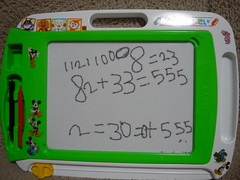Calculating Rents Quickly (And for Free), DIY-Style
Step One: Don’t over-think it.
 One of the more sensitive issues of landlordery is how to calculate rent amoutns. The struggle between property investors’ desire to make money and tenants’ ability to pay money is constant, and the number of factors it’s possible to take into account is enormous. If you wanted to make the process insanely complex, you totally could. But a DIY landlord generally doesn’t have the time or brain-space to devote to that kind of complexity. Fortunately, there are some easy, free tools online that can give you a solid starting point for your rents.
One of the more sensitive issues of landlordery is how to calculate rent amoutns. The struggle between property investors’ desire to make money and tenants’ ability to pay money is constant, and the number of factors it’s possible to take into account is enormous. If you wanted to make the process insanely complex, you totally could. But a DIY landlord generally doesn’t have the time or brain-space to devote to that kind of complexity. Fortunately, there are some easy, free tools online that can give you a solid starting point for your rents.
The Reality of Rent-Setting
We mentioned the struggle between owners and tenants above, but the reality of rent-setting is actually mostly dependent on a completely different issue: the quality of the neighborhood. The fact is that tenants seek out the best houses they can afford with exceptions.
One of those exceptions being that if a house is clearly overpriced for its neighborhood, they’ll avoid it even if it’s an amazing house, because they want value for their hard earned money. Another is that they won’t go for a house that is clearly underpriced for the neighborhood, because they’ll assume there’s something hidden and horribly wrong with the house.
In other words, no matter what you think of your house (and no matter what level of profit you think you need), your rent is first and foremost limited by what the neighborhood will support. In turn, this means the most important information you can get when calculating rents is what other comparable homes in the neighborhood (‘comps’) are renting for.
Comp-Finders
Fortunately, the Internet has several decent tools that automatically find comps and average them over a certain radius, then use those to calculate a decent starting point for calculating rents. In our experience, the two that consistently give us the best results are Zillow’s Rent Zestimate and the rent estimates given by Rentometer.com.
Moving Beyond the Starting Point
Of course, the rent estimates you get from these tools should rarely be used as-is — but with the use of a couple of further tools, you can quickly get the information that you need to develop your target rent.
The first step is to figure out how well your rental home compares to the competition. This is pretty simple — Zillow.com makes it easy. Just type your property’s address into the ‘for rent’ section at Zillow, and it will pull up a map that shows all of the nearby properties for rent. Spend a few minutes clicking briefly on each, and in addition to bedrooms, baths, square footage, basement and garage, look for:
- Curb Appeal
- Interior condition
- Amenities
If your home is right in-line with the competition, then the Rent Zestimate is probably right on. If you feel your home is slightly better than the competition (hey, put a check your ego here!), then by all means bump your rent by 5-10%. Similarly, you would drop your rent 5-10% (hopefully not more) if your home didn’t match up to the competition.
The second step is to ask yourself what’s more important: getting a decent income per month, or getting a tenant moved in quickly. If you’re willing to take the risk of going 3 months without a tenant, feel free to price your property 5-10% higher than the comp-finding tools indicate. If you need a tenant in ASAP because your cashflow demands are high, it’s wise to start 5-10% below the lowest-priced similar house but no more than 20% below the neighborhood average, or you’ll run into the ‘hidden-problems assumption’ mentioned above.
The Neighborhood Trap
Finally, while it’s a relatively rare phenomenon, it’s important to note that there are some neighborhoods — particularly in certain areas of Detroit — that are legitimately only attractive to the kinds of people who have a difficult time passing tenant screening. The surprising part about these neighborhoods is that some of them return rental comps near the four-digit mark, because the boundaries of the specific neighborhood fall entirely within the circular-radius-based algorithm used by the comp-finding tools. So it pays to check one last tool.
Trulia’s Crime Map system shows you a block-by-block breakdown of where crime happens in an area. And while the correlation between high crime and ‘difficult’ neighborhoods is far from perfect, it’s a good bet that if your property is on a two-block-wide high-crime strip encircled by a field of green, you should keep a careful eye on your applicants. If you try to ‘pre-screen’ by choosing a higher rent, expect your vacancy to last months before you nail the right tenant. If you try to lower the rent to appeal to the neighborhood’s target audience, be prepared to deal with a lower quality of tenant. Either way, the important part is that you know what you’re getting into so you aren’t caught off-guard when there doesn’t seem be to a way of calculating rents that gives you the result you need.